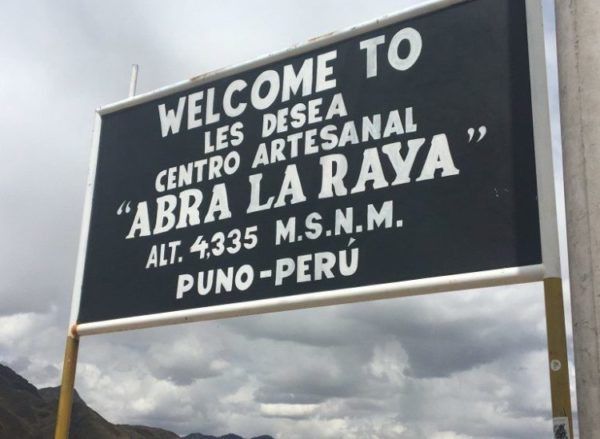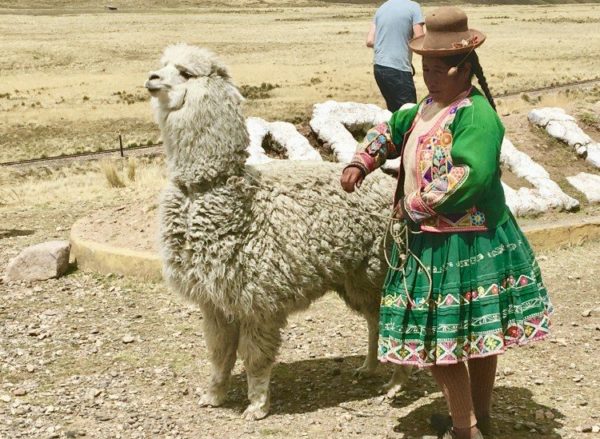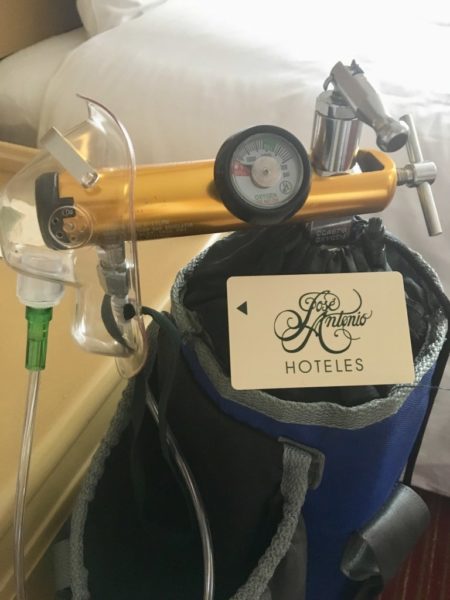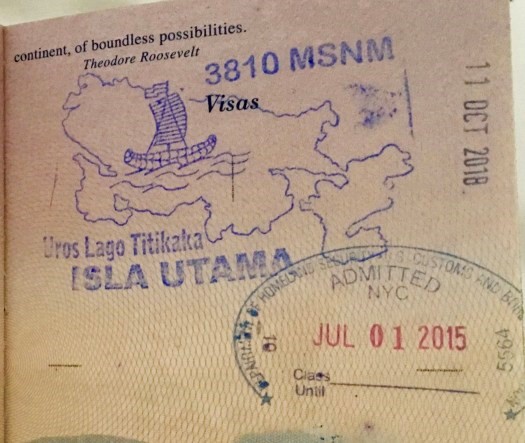Lake Titicaca; Peru’s Floating Islands
It is unlikely that the soaring altitude and sheer magnificence of the Andes Mountains inspired “Stairway to Heaven.” This signature work of the virtuoso rock band Led Zepplin is arguably the best rock ballad oh, maybe Ever. Those guitar riffs live on, even if Lake Titicaca isn’t their spiritual home.
However, the lake, situated in the Andes at an elevation of 12, 500 feet (3800 meters), does seem a likely rest stop along the imagined “stairway.”
If not a Stairway, Lake Titicaca is definitely a sanctuary.
Incas conquered (and often enslaved) other tribes, as they built an empire the length of the Andes. Legend has it that the Uru people living along the lake sought sanctuary from Incan rule by building floating reed islands on the lake, out of reach of their hostile neighbors. Today, the Uros continue to live and thrive in their island-based communities.
Visiting the Uros community is kind of travel experienceYampu Tours does so well; authentic, respectful of local cultures and traditions. Knowledgable guides who speak the local languages. In the case of the Uros, the language is Aymara. (Most of the indigenous Andeans speak Quechua, the language of the Incas.
The single day trip to Lake Titicaca was part of a 10-day epic experience in Peru with Yampu. Another segment of the Yampu trip is chronicled here.
Getting to Lake Titicaca
Traveling from Cusco along the spine of South America is a good 8-hour journey overland. One can fly to Puno but the trade-off is to miss the stark, arid beauty of the high desert mountains. The vast expanse of “nothing” is, in itself, something special. Yampu’s organization and attention to detail made the trip bearable in a luxury coach.
The world isn’t uniformly gorgeous, but it is uniformly intriguing. The Andean highlands are like the surface of the moon; endless rock and sand. You don’t want to live there, but it is worth the drive to see it.
Besides, you need to humble brag on Instagram. On a flyover, you’d miss this the dwindling glacier, the woman with her pet alpaca and the welcome to the Abra la Raya mountain pass.
At a bit over 14,000 feet (elevation noted in meters), you feel lightheaded, your heart pounds. You begin to think that you are indeed “knock, knock knockin’ on heaven’s door.”
From there it was quite literally “downhill” into our luxurious base for the next two nights. Given the elevation, we were encouraged to rest. A good idea in my estimation. I welcomed the hotel’s ready supply of oxygen, wheeled bedside.
Floating islands – a place to call home.
The Uru people in Peru, living along Lake Titicaca, took to the water as a defense against the troubling Incas. They fashioned boats using totora reeds from the lake and constructed a network of islands Today, they use motor launches to ferry tourists to the islands, about three miles out onto the lake.
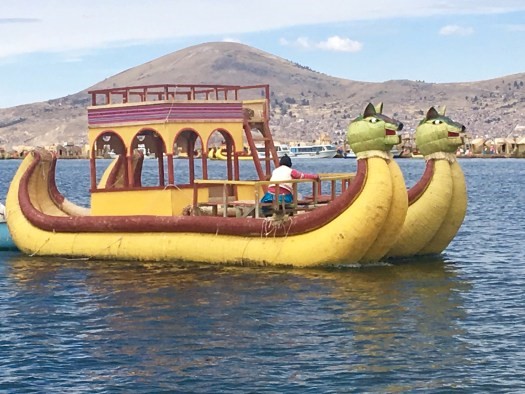
To create the islands, blocks of reeds are cut below the water line to include the buoyant and thickly intertwined roots. The blocks are lashed together forming floating platforms and anchored to the bottom of the lake.
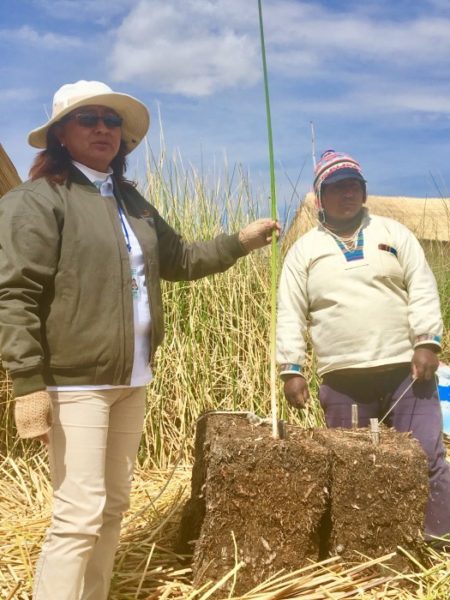
Reeds are spread on the platform. The surface is spongy, sort of like walking on a waterbed. As the reeds dry out, they become quite brittle and are replaced with a fresh layer, about every three months. On the other hand, during the rainy season, the reeds rot quickly and the replacement is more frequent.
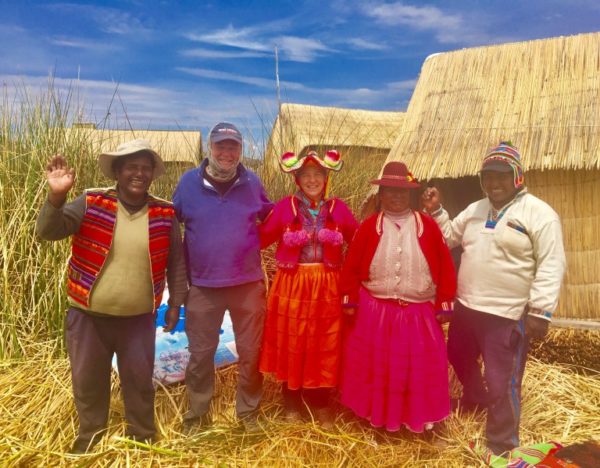
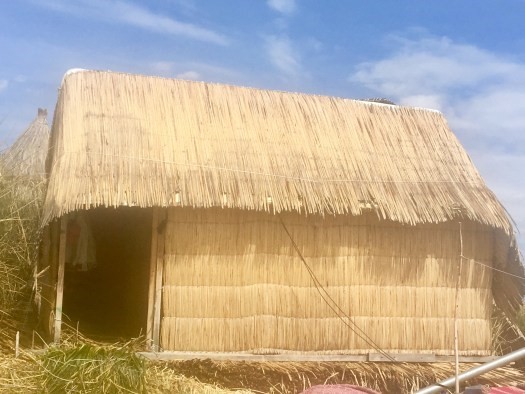
Photo: Jane Trombley
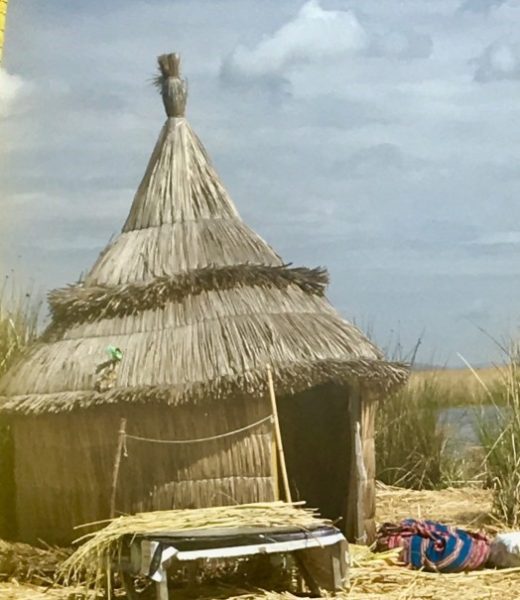
Modern Life on the floating islands
About 200 people of Uros descent still live on the islands, maintaining the traditional lifestyle. The larger islands house about 10 families; the smaller ones one or two extended families. Each island lasts about 30 years.
Today, solar panels rise above the thatched roofs; outboard engines replace the long oars and traditional sails. Young children attend school on the larger islands and then more advanced education on the mainland.
Tourism is thriving – Uros even has its own passport stamp – for a small charge of course. Sign me up! I was there, 11 October 2018.
It may very well be that tourism to the floating islands is restricted in the future. The reeds are fragile and the increased foot traffic takes its toll. Each step, each footfall, sinks about 2-4″ into the island’s spongy surface reeds, depending on the person’s weight and other factors. A plan for sustainable tourism to the region is in order.
That said, Lake Titicaca’s floating islands are a very special place; warm people inviting you into their homes and lives, if only for a little while. Go now, and go with Yampu.
Tags:

